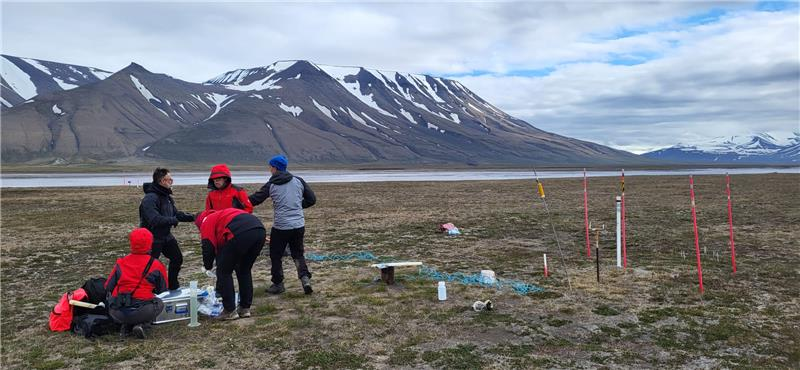July 29, 2025
XTREAM’s first stop: a mission to the Arctic

In July 2025, the European project XTREAM conducted its first scientific expedition in a region that hosts some of the planet’s most extreme ecosystems: the Svalbard archipelago in the Norwegian Arctic. This first field deployment marked a major success, accomplishing the mission’s three main objectives: microbial sample collection, the first field test of the project’s smart drone, and delivery of the first academic training research, innovation, and science communication. Below, you will discover the ins and outs of our exceptional experience!
Svalbard: a natural laboratory
Svalbard is a privileged location for the study of extremophile microorganisms. According to Lise Øvreås, Norwegian microbiologist and XTREAM collaborator from the University Centre in Svalbard (UNIS): “Different ecosystems characterized by low temperatures, acidity, and nutrient scarcity converge in the same region, making it an ideal setting for discovering diverse and highly adapted microbial life”.
Microorganisms that thrive in such extreme environments possess unique adaptations with immense potential for biotechnology. Therefore, as part of its mission, the XTREAM team set out to explore three of these habitats —glaciers, acid drainage areas, and cryopegs (pockets of liquid water trapped under permafrost)— and collected valuable microbial samples during the expedition.
Cutting-edge technology
One of the highlights of the expedition was the first successful field deployment of the project’s drone, designed specifically for use in extreme environments. As Øvreås says: “This advanced tool not only facilitates sampling in remote areas but also reduces the need for human and material resources, increasing both the efficiency and sustainability of fieldwork”.
Equipped with multiple sensors and cameras, the drone captures images every two seconds and, using AI, generates detailed maps that highlight the most promising zones for microbial sampling. This automation streamlines fieldwork and directs effort precisely where it’s most valuable.
This first flight also marked an important project milestone: the acquisition of training data. In future phases of the project, the drone is expected to also collect samples autonomously, further automating the scientific process while minimizing environmental impact.
Science that trains and connects
The expedition took place within the framework of an advanced Arctic microbiology course offered by UNIS, the University Centre in Svalbard. XTREAM team members not only participated in field and laboratory work but also provided training for international students on key topics like sampling in extreme environments, metagenomic analysis, biotech innovation, and science communication.
This educational component helped prepare the next generation of researchers in a real-world context, merging science with teaching and encouraging a culture of international collaboration and knowledge exchange.
What comes next
XTREAM officially launches its fieldwork, in which they will visit other extreme ecosystems with a focus on exploring microbial life with high potential for sustainable industrial innovation.
The collected samples have now returned with XTREAM researchers to their home laboratories across Europe, where the second stage of the project begins: metagenomic and bioinformatic analysis to uncover the secrets hidden in these resilient organisms.
The goal: to identify metabolic pathways, compounds, or enzymes with potential applications in biotechnology. Øvreås highlights: “These microorganisms don’t just survive —they’re incredibly active. Their adaptations could inspire innovative solutions for more efficient and environmentally friendly industries.”
